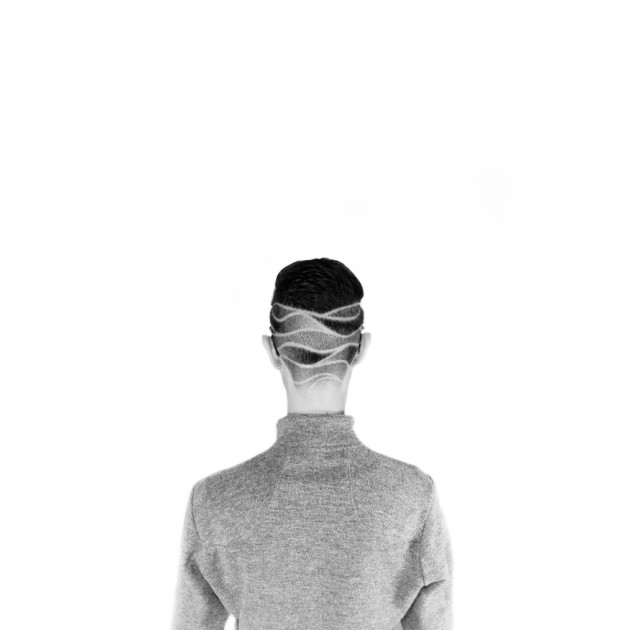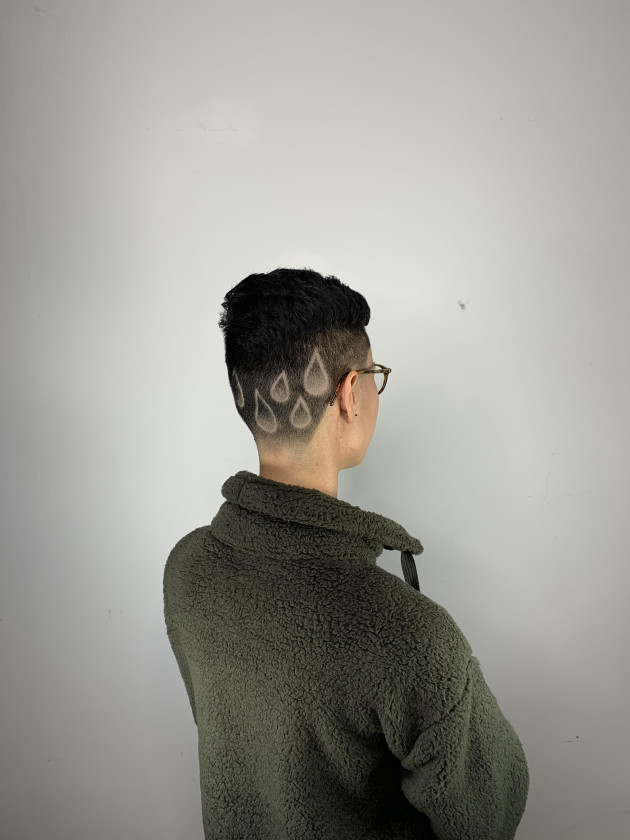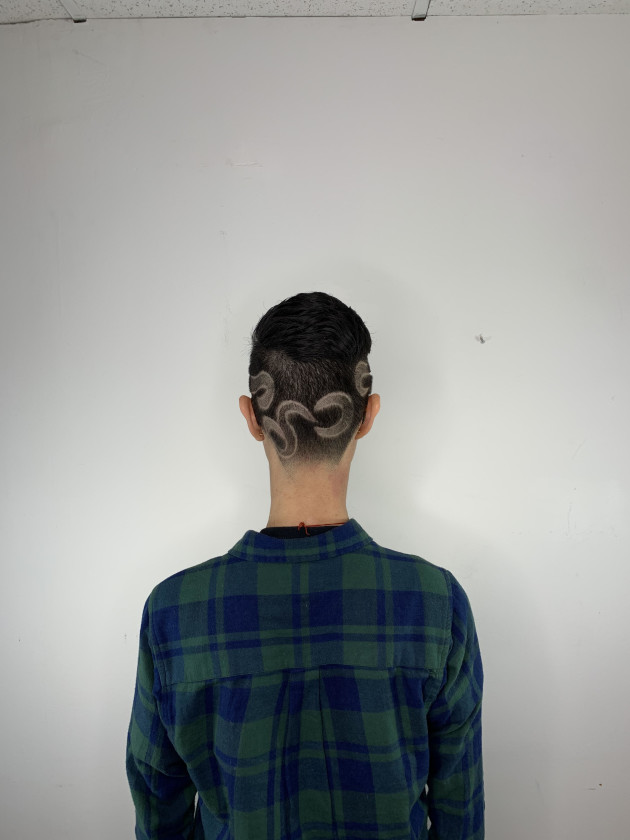Tag : torah
April 30, 2020 by admin
What Carrying the Torah Taught Me About Faith
My daughter’s bat mitzvah took place on Purim, March 10, right as the country was introduced to social distancing and mere days before we were encouraged to stay home. The weekend before, my family went to shul together for Shabbat services. My son has been volunteering as a bimah boy since his bar mitzvah last year, so he’s there regularly with my husband, but my daughter and I often stay home.
Being in shul fills me with conflicting emotions. I love the community, the warmth, and the sense of connection amongst a group of people that large. But I have issues with some of the actual tenets of the religion itself, and a very uncertain relationship with G-d. It’s my love for the clergy and fellow congregants that keep me coming back. I spend my time there in reflection upon myself, my actions, and how I can be better in the future. I rarely follow along in the Siddur, feeling those words so separate from my own.
- 1 Comment
April 20, 2020 by admin
Hair as a Jewish Art Form: A Parasha Haircut Project
It was late October. I had been going to a new barber recently. I had seen Billy’s (@Odabu) incredible line work on Instagram and was ready to start doing bolder things with my hair. On this day, I walked in and said: “I’ve been thinking a lot about water and waves lately, waves that roll and curl over themselves.” With no further explanation, Billy pulled out his razors and started prepping the canvas of my head. An hour later Billy held a small mirror to my face and I saw the reflection of the back of my head in the backlit mirror. I was awestruck at the mural that had been carved into my head. Waiting for the trolley home, I continued to reflect on water and noticed where I was in Jewish time. I had just danced with the Torah in the streets at Simchat Torah and studied parasha Breishit, the very first section of the weekly Torah portion. I reached my hands to the back of my head and traced the shapes in my head. “בראשית ברא אלוהים את השמים ואת הארץ.” (In the beginning, G-d created the heavens and the earth.) “Breishit,” I said to myself.
The story of Breishit was now carved into the back of my head. In a period where antisemitism is on the rise and there is live conversation around walking through this world Jewishly, I would proclaim my Judaism publicly by donning a parasha a month in my hair, and thus, #ParashaHaircuts was born.
 This project is like a drash (an interpretation of the text) upon a drash upon a drash, an interpretation of the biblical text that is transformed. First, I have to interpret the parasha (weekly Torah portion) and create my vision for how I would depict it. Then, I have to translate that image into words that could describe something that can be shaved into my hair for a barber with mastery of the razor and minimal knowledge of the Torah. At that point, I listen to the buzz of the razor and feel the aloe trace the lines on my head as I wait with curiosity and anticipation to be handed the mirror. Each time, I’m impressed at the artistry I see, but what has been carved into demands me to create yet another drash. I am often forced to wrestle with my interpretation of the parasha with the moment illustrated in my hair. It’s a process that seems to so perfectly reflect our tradition – where our stories have been told and retold over millennia.
This project is like a drash (an interpretation of the text) upon a drash upon a drash, an interpretation of the biblical text that is transformed. First, I have to interpret the parasha (weekly Torah portion) and create my vision for how I would depict it. Then, I have to translate that image into words that could describe something that can be shaved into my hair for a barber with mastery of the razor and minimal knowledge of the Torah. At that point, I listen to the buzz of the razor and feel the aloe trace the lines on my head as I wait with curiosity and anticipation to be handed the mirror. Each time, I’m impressed at the artistry I see, but what has been carved into demands me to create yet another drash. I am often forced to wrestle with my interpretation of the parasha with the moment illustrated in my hair. It’s a process that seems to so perfectly reflect our tradition – where our stories have been told and retold over millennia.
In late November I walked into Billy’s studio for parasha Chayei Sarah. I was still spending a lot of time meditating on the theme of water. Parasha Chayei Sarah is filled with tropes of water, from Abraham mourning Sarah to Rebecca drawing water from the well. I told Billy that I had a vision of tears flowing down the back of my head. When he turned the mirror back at me, I saw big and heavy droplets. On the trolley home in Philadelphia, I looked through my Facebook memories. Three years earlier to the day, I had left for Standing Rock. I would go to be a water protector, defending indigenous land and living waters. My haircuts were truly becoming drashot at this point, drawing on the Torah text as well as my own life experience and Billy’s creativity, interpretation, and skills all illustrated on the back and sides of my head.
 On Instagram, a rabbinical colleague commented: “[My chevurta] and I were just talking about all the times tears show up in Midrash! The angels cried into yizchak’s eyes as he was bound on the altar, which causes his ‘eyes to dim’. And the multiple midrashim about Sarah- when she find out what *almost* happened to her son she cried and wailed, and her soul leapt out of her body.” I was so struck by this drash, reflecting on the grief and heaviness in the droplets on my head. The project came alive in my colleagues’ interaction with me and the continuing drashot they offered. It made me wonder about the stories that strangers tell when they pass me in the streets, that fellow Jews will tell when they sit behind me in shul. It is exciting for me to be let into the minds of those who engage in my social media presence and share their drashot with me. #ParashaHaircuts is truly an interactive project in so many ways.
On Instagram, a rabbinical colleague commented: “[My chevurta] and I were just talking about all the times tears show up in Midrash! The angels cried into yizchak’s eyes as he was bound on the altar, which causes his ‘eyes to dim’. And the multiple midrashim about Sarah- when she find out what *almost* happened to her son she cried and wailed, and her soul leapt out of her body.” I was so struck by this drash, reflecting on the grief and heaviness in the droplets on my head. The project came alive in my colleagues’ interaction with me and the continuing drashot they offered. It made me wonder about the stories that strangers tell when they pass me in the streets, that fellow Jews will tell when they sit behind me in shul. It is exciting for me to be let into the minds of those who engage in my social media presence and share their drashot with me. #ParashaHaircuts is truly an interactive project in so many ways.
I had no idea how to describe Joseph’s dream to my barber. As a rabbinical student I remind myself that not everyone is interested in religion and surely there aren’t many who want to be offered a sermon prompting. When I’ve described this project to Billy, he’s been supportive and excited about the creativity we are both able to bring to the project, though I’ve never felt an invitation or his interest to delve deeply into the material content of the parshiot. We are creative partners and collaborators in an artistic project. So this week, I again translated my interpretation of the parasha into words that may be easily translatable into something visual I said to him: “This week I am inspired by Van Gogh’s Starry Night and dreaming and I think I want there to be a moon shape.” Again Billy worked his magic. He turned the mirror back at me, and I took a few glances. Whatever doodles I had scribbled in the margins of my class notes did not remotely match what had just been carved into the back of my head. I smiled at Billy with genuine awe at his artistry while feeling a pit in my stomach. I was going to have to make another drash.
After I shared my next haircut for parasha Vayeshev on Facebook, another rabbinic colleague commented: “Swirls of light into dark and dark into light. Hanukkah, havdalah and the joy of changes all rolled into one.” She brought more timely relevance to a haircut that I intended, somehow, to represent a dream. She wove together for me the way that the parasha interacted with Jewish time, coinciding with Hanukkah.This is the beauty of this project, the opportunity to engage and wrestle and reconcile with the texts of my tradition over and over. I am grateful for this embodied way to learn my tradition and this new way of carrying it with me. I witness the transformation of my drashot as well as noticing the way the stories change on my head as my hair grows.

May Ye is a Chinese-American rabbinical student at the Reconstructionist Rabbinical College. You can follow her haircut journey @ParashaHaircuts and follow her barber @odabu_ on Instagram.
- No Comments
January 16, 2020 by admin
For Jews of Color, by Jews of Color

I remember a time not long ago in which I could read Hebrew, chant it, recognize words, but not understand the text before me. I remember visiting Orthodox cousins and watching them davening, a flurry of words on their tongues. In contrast, my immediate family could not speak a word of Hebrew and, for a long time, Hebrew remained a mystery language to us. At times growing up it was difficult to feel ownership over my Jewishness. I remember being told as a child that I was not even Jewish by a person who simply looked at my mother, who is Filipina and Jewish, and made an assumption.
Particularly outside of Orthodox spaces, Hebrew and Jewish education in this country are inaccessible at best, and unnecessarily expensive. Hebrew is by no means the best or only Jewish language, but it is one that can grant access to a wealth of Jewish texts and histories spanning time periods and continents. The distinctly American myth that adults cannot learn new languages impedes access to Hebrew courses. The pervasive idea is that if you did not or could not access Hebrew or Jewish education as a child, if you do not have the yichus, the background, as some might say, then you will not be successful. Jews of Color have as many individual experiences as there are Jews of Color in the world, but the JOC community includes many adult learners wanting a Jewish education who are particularly likely to fall through the cracks. When you add pervasive racism, which exists even in the most progressive majority-white Jewish spaces, Jewish learning spaces that do exist can still not be the right place for good learning to occur.
So my friend and colleague Yehudah Webster and I co-founded Ammud, the Jews of Color Torah Academy as a space for Jewish education for Jews of Color by Jews of Color.
ARIELLE KORMAN, “Why She Needed to Create the Jews of Color Torah Academy,” on the Lilith Blog.
- No Comments
December 2, 2019 by Avi Strausberg
A Torah of Tears: Reflecting on Torah Informed by the Lens of Queer Experience

Hadar’s Queer Colloquium.
Trent Campbell, Picture This Productions
I didn’t think I needed Queer Torah in my life. I had a narrow vision of what Queer Torah was, which was limited to queering the characters of the Torah, essentially imposing gayness onto our ancestors, for the sake of seeing myself represented in our narratives. While I don’t underestimate how for many people it is not only powerful but even necessary to see ourselves represented in Torah, for me this notion held little appeal. This is why, even as a queer rabbi, I didn’t have any of the good Queer Torah books* I was supposed to have on my bookshelf. I never sought them out, and if I’m honest, I’d say I even felt a bit turned off by them.
- No Comments
April 2, 2019 by admin
Baking Challah to Bring the Torah
As my mother drove a car full of kids to elementary school, I sat in the backseat, creating dough. The blue mixing bowl on my lap didn’t protect my clothes and the vehicle from a light layer of flour, and the practice was probably not the most sanitary, but the Friday was busy, and 7:30am was the only time for dough prep.
Challah, a staple of Shabbat, holiday tradition and Jewish cuisine, plays many roles: a rushed ritual in the back of a moving vehicle; the perfect bookends for a deli meat sandwich; a piece tossed across the family table; the loaf the dog can’t seem to get enough of. For Vanessa Harper, challah has become a space for shaping and sharing Torah.
Harper, a third year dual rabbinical and education program student at Hebrew Union College, uses the medium of challah as “a medium of interpretation.” Last year, she followed the entire Torah cycle, shaping and baking a challah in relation to each portion.
“There’s something a little wonderfully subversive about how bread-making has been the province of women for so long. For so many centuries, women’s contribution to the Shabbat table has been the food and the challahs, and men bring the dvar torah. And so using the challah to bring the Torah is in a way, a feminist, subversive act,” Harper told Lilith over a challah-making tutorial. With Lilith, Harper created a pomegranate shaped challah. The pomegranate corresponded to the High Priest’s robe, described in the Torah portion Tetzaveh as adorned with bells and pomegranates.
- No Comments
 Please wait...
Please wait...